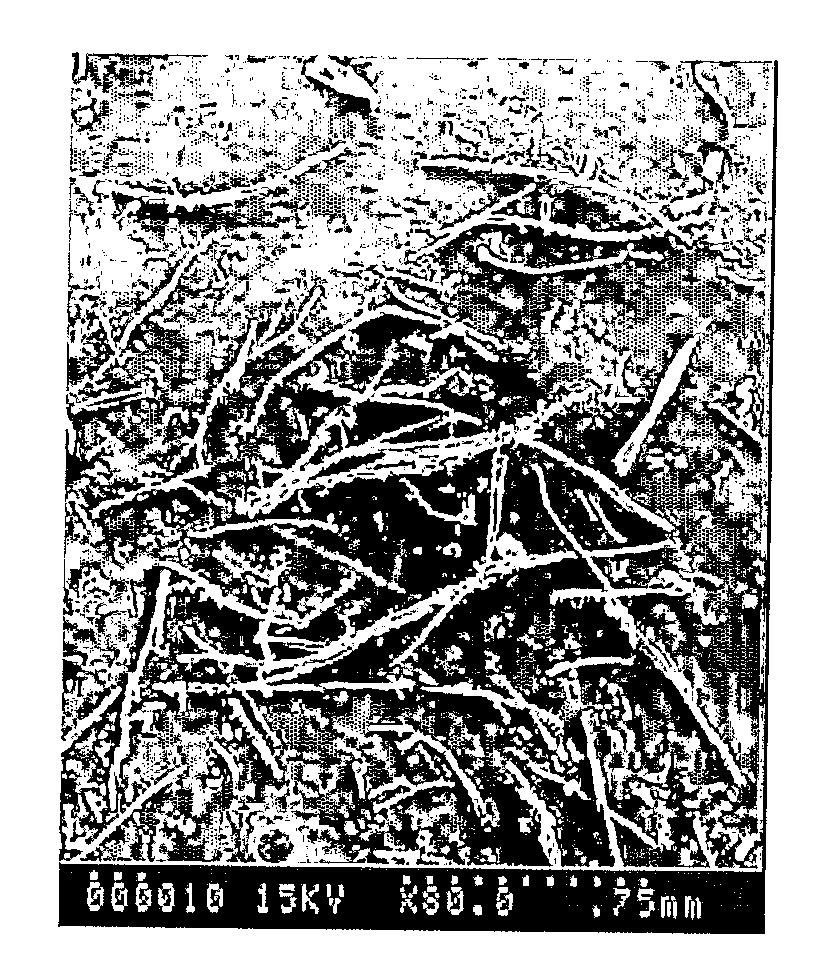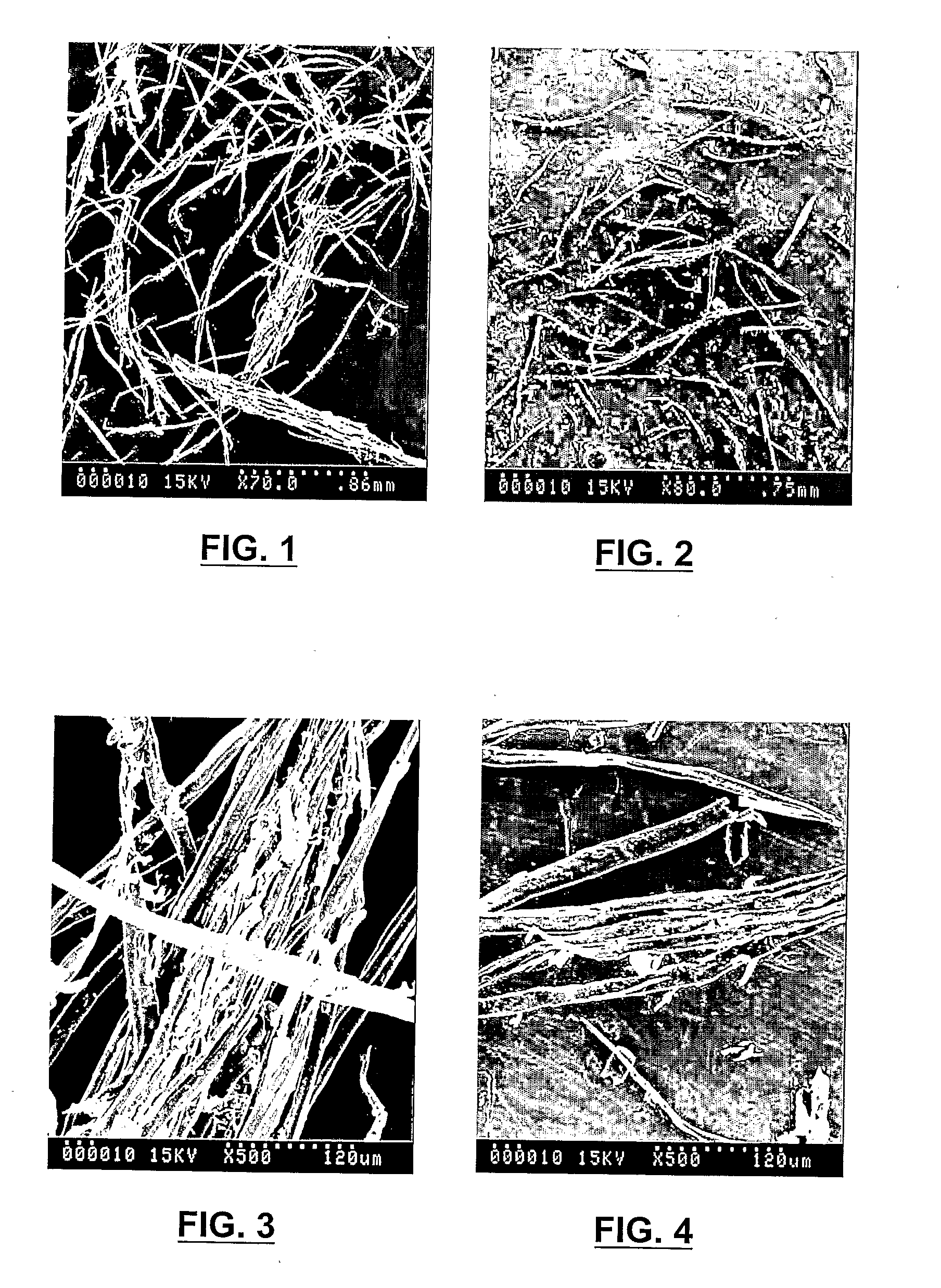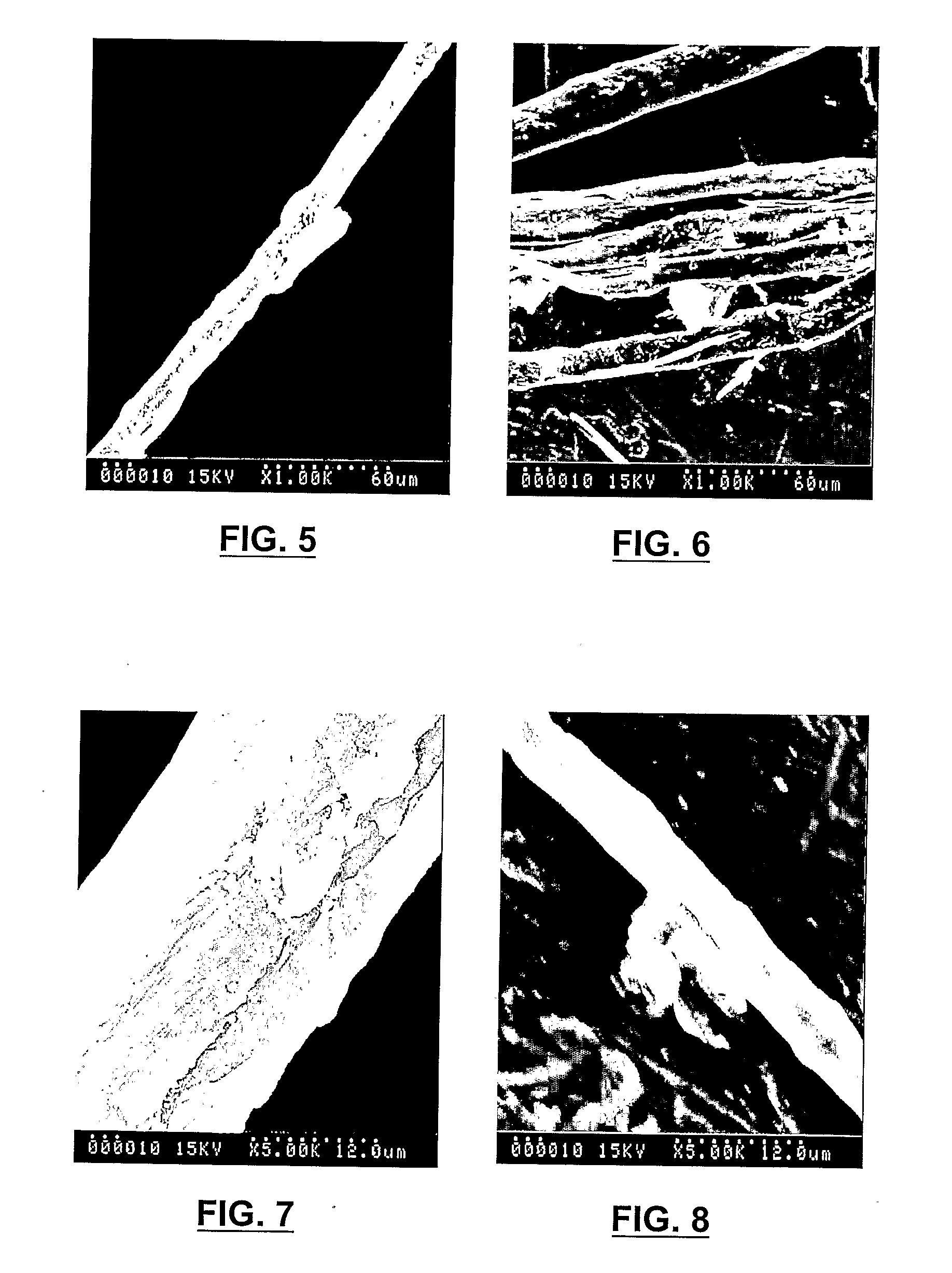Manufacturing process for high performance lignocellulosic fibre composite materials
a technology of lignocellulosic fibres and composite materials, which is applied in the field of manufacturing process of high-performance lignocellulosic fibres/thermoplastic composite materials, can solve the problems of poor wetting and dispersion of fibres, ineffective carrying of load from the matrix of fibres, and difficulty in homogeneous dispersion of these fibres in the hydrophobic thermoplastic matrix, etc., to achieve energy saving, reduce the amount of plastics synthetic fibres
- Summary
- Abstract
- Description
- Claims
- Application Information
AI Technical Summary
Benefits of technology
Problems solved by technology
Method used
Image
Examples
examples
[0082]The following examples illustrate some of the moldable thermoplastic compositions and composite products comprising lignocellulosic fibres and the methods of making the same within the scope of the present invention. These are illustrative examples only and changes and modifications can be made with respect to the invention by one of ordinary skill in the art without departing from the scope of the invention.
Performance Properties of Polypropylene
[0083]For the purposes of comparison, the performance properties of polypropylene are shown in Table 1.
TABLE 1Properties of polyolefin.ASTM TestPerformance propertyASTM D638Tensile strength, MPa31.6ASTM D638Tensile Modulus, GPa1.21ASTM D790Flexural Strength, MPa50ASTM D790Flexural Modulus, GPa1.41
Composition of Thermoplastic
[0084]Examples of the composition of the moldable thermoplastic composition are given in Table 2. Pulp fibres were defibrillated in a high shear internal mixer for not less than thirty seconds and melt blended with...
PUM
| Property | Measurement | Unit |
|---|---|---|
| temperature | aaaaa | aaaaa |
| weight percent | aaaaa | aaaaa |
| length | aaaaa | aaaaa |
Abstract
Description
Claims
Application Information
 Login to View More
Login to View More - R&D
- Intellectual Property
- Life Sciences
- Materials
- Tech Scout
- Unparalleled Data Quality
- Higher Quality Content
- 60% Fewer Hallucinations
Browse by: Latest US Patents, China's latest patents, Technical Efficacy Thesaurus, Application Domain, Technology Topic, Popular Technical Reports.
© 2025 PatSnap. All rights reserved.Legal|Privacy policy|Modern Slavery Act Transparency Statement|Sitemap|About US| Contact US: help@patsnap.com



